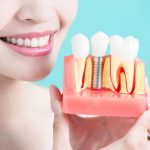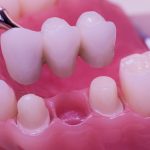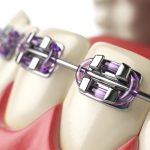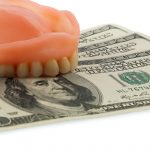Cosmetic Dentistry Costs & FAQ
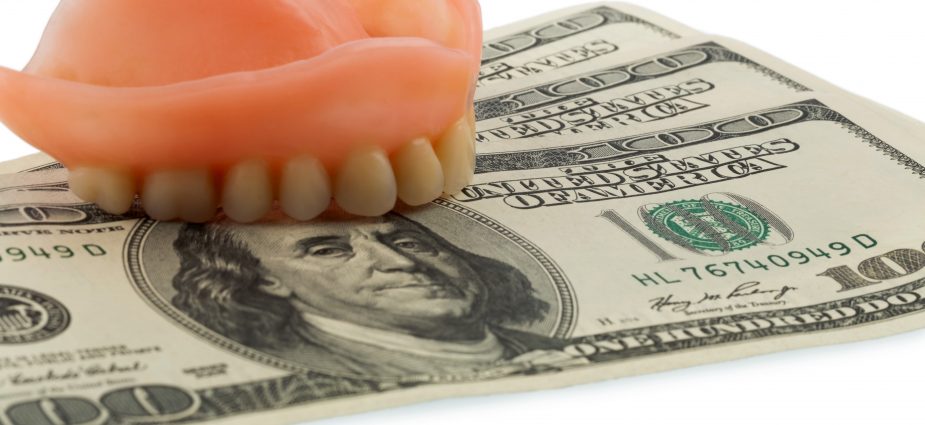
Cosmetic dentistry costs vary widely, but you’ll find approximate costs in our articles on particular procedures. For example, professional in-office teeth whitening costs approximately $500 to $850, whereas over-the-counter whiteners range in cost from $4 to $100.
Usually dental insurance doesn’t cover cosmetic dentistry. But some dental plans may cover part of the cost of certain procedures, such as crowns, especially when the main purpose is to repair a structural problem that could affect the overall health of your mouth. Usually, functional and restorative dentistry is covered in part by insurance, while elective cosmetic treatment is seldom covered.
If treatment is not covered by your dental insurance policy, or if you don’t have insurance, you may be able to enlist the services of a third-party financing company like CareCredit or Capital One. Qualified candidates can work with a financing company to develop a monthly payment plan that best fits their budget.
For detailed cosmetic dentistry cost information, check out the following articles:
Cosmetic Dentistry FAQs
Q. What causes the discoloration of a tooth?
A.Tooth discoloration is a normal part of aging. As people age, enamel wears down, and teeth take on a duller appearance. Teeth can also become discolored from smoking and heavy consumption of coffee or tea. Other causes of tooth discoloration include side effects of medications (specifically certain antibiotics) used during the developmental phase of the teeth, an individual’s genetic makeup, and excessive fluoride consumption (fluorosis, seen in both children and adults). Teeth whitening and veneers offer an aesthetic solution for people with discolored or dull-looking teeth.
(Read more about tooth discoloration)
Q. Are any side effects associated with teeth whitening?
A. Dentists take protective measures to prevent discomfort during teeth whitening procedures. Typically, a protective gel or rubber shield is used to prevent bleaching agents from damaging gum tissue. The most common bleaching agents used by dentists are approved for use by the American Dental Association, ensuring safety and effectiveness. After the whitening procedure, you may experience minimal tooth sensitivity for a short period of time
Q. Does teeth whitening work for everyone?
A. No. In cases involving severe discoloration, teeth whitening may not result in a bright, white smile. Individuals with severe tooth discoloration should consider other options, such as porcelain veneers or composite bonding.
(Read more about teeth whitening)
Q. Are there special considerations for dental veneers?
A. The factors to consider when evaluating a veneer procedure from an esthetic point of view include:
- Your goals.
- The color of your teeth. For example, most veneers are ultra-thin and therefore translucent, so discolored teeth underneath may show through. Your dentist may recommend teeth whitening first to reduce discoloration. Veneers are fabricated to have a natural tooth-like appearance. Veneer color must match that of any remaining teeth, and texturing may be applied to veneer surfaces for a natural look.
- The impact of your lifestyle and habits. For example, teeth grinding and clenching may make the veneer more susceptible to chips, cracks, and breaking.
You should also consider the artistry of the dentist who designs the specifications and ultimately places the veneers. Veneer materials are universal, but the artistic skill of the dentist, as well as that of the lab technician who crafts the veneers, plays a major role in the esthetic appeal of the final product.
Q. How do I know whether a cosmetic dentist is good or not?
A. One of the first questions you should ask is what type of training he or she has for the particular procedures you’re interested in. Not all dentists know and perform all cosmetic dentistry procedures. As such, dentists often involve other specialists (orthodontist, endodontist, lab techs, etc.) in treatment planning and execution. It is important to know exactly who will be involved in your treatment and what they will be doing.
You should also ask to see before-and-after photos of patients who underwent those procedures. Ask questions about their cases and the strategies the dentist used to improve their smiles.
Additionally, ask if the dentist is an accredited member of the American Academy of Cosmetic Dentistry (AACD). Accredited members undergo extensive continuing education and rigorous testing to ensure that their skills using composite bonding, porcelain veneers, and other restorations and procedures are exemplary and worthy of accreditation status.
Q. What cosmetic procedures are available for people who are missing teeth?
A. Although dentures are not considered a cosmetic procedure, they provide an aesthetic benefit for people who have lost all or some of their teeth. People who are missing only certain teeth, or rows of teeth, may be better served by a dental bridge or dental implants. It is best to have your situation evaluated by a dental professional in order to establish candidacy for any of these procedures.
Q. May I choose to be sedated?
A. Yes. The level of sedation necessary depends on several factors, including:
- Your health and medical history.
- The procedure being performed.
- Your dentist’s familiarity with sedation modalities.
Most people do not require a high level of sedation during cosmetic dental procedures.
(Read more about sedation dentistry)
Q. Why can’t smokers undergo certain procedures?
A. Smoking is a leading cause of tooth loss. Smokers also have an increased risk for periodontal disease (gum disease), leukoplakia, loss of bone structure, inflammation of the salivary gland, and development of lung, throat, or oral cancer. Smokers therefore face an additional set of considerations when exploring cosmetic treatment.
One restriction for smokers involves dental implants. Smoking increases the risk that a dental implant will fail to integrate with bone tissue (osseointegration). Smoking also affects gum health, and unhealthy gums can lead to dental implant failure. If you smoke, you need to quit before having an implant.
Another restriction involves teeth whitening. If you whiten your teeth but continue to smoke, the whitening effect will not last as long, because smoking stains the teeth.
Q. Are dental implants suitable for children?
A. Dentists indicate that implants cannot be considered until bone growth has completed. This typically occurs during adolescence, but may vary from one child to the next. Implants placed prior to bone growth completion may shift out of place and cause severe problems. If a child loses a tooth before bone growth has completed, an orthodontic device called a “space maintainer” may be used to prevent an abnormal growth of surrounding teeth. Once bone growth has completed, the space maintainer can be removed and the missing tooth restored using an implant or bridge.
Q. Are veneers my only option if I want a smile makeover?
A. No. Your cosmetic dentist will determine the procedures that would be the best for you. The dentist’s suggestions will be based on your desires and a thorough examination to determine the condition of your teeth and what problems, if any, may require dental treatment. Therefore, your smile makeover could involve teeth whitening, crowns, composite bonding, gingival sculpting, inlays and onlays or any other combination of procedures that your dentist determines is right for your cosmetic treatment plan.
Q. I want a smile makeover because I think I have ugly teeth, but I don’t have any cavities or anything else wrong that needs to be fixed. Can something be done to make my smile look better?
A. If you are unhappy with the appearance of your smile, the first step is to do your homework and investigate the level of experience for each dentist you consider before setting up a consultation appointment. We suggest that you read How to Choose a Cosmetic Dentist for information about questions to ask and other criteria that can help you in selecting the dentist that is right for you.
If you are concerned about the removal of healthy tooth structure, the good news is that dentists have conservative techniques available to enhance the look of your smile, including teeth whitening and composite bonding, as well as minimal and no-prep veneers.
Q. Are there cosmetic dentistry procedures that can be performed on children or teenagers?
A. There are many reasons why children and adolescents may want a better looking or prettier smile, such as for better socialization, enhanced self-esteem and greater confidence. Depending on your child’s age and where he or she is in the development of his or her teeth and dental arches, some cosmetic procedures may be suitable if there is a specific problem that needs correcting.
For example, some children and adolescents may have severely discolored teeth as a result of taking certain medications. Or, the front teeth may have been fractured due to an accident or sports injury and require composite bonding or veneers. In other instances, there still may be slight gaps or spaces between the teeth even after orthodontics, so perhaps composite bonding would enhance the look of the smile.
If your child or teenager is concerned about the appearance of his or her smile, make an appointment to see your dentist. He or she will suggest the most appropriate course of action based on your child’s age, oral condition and desires.



